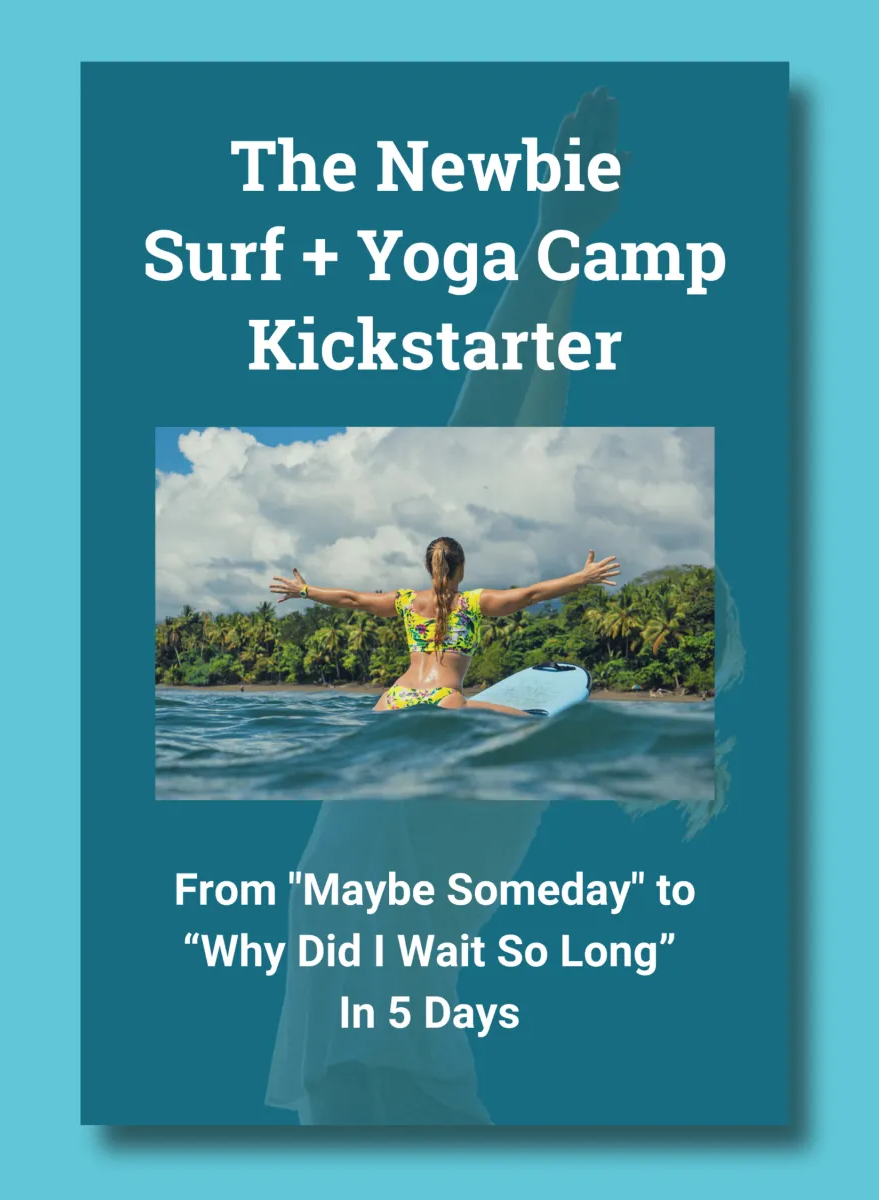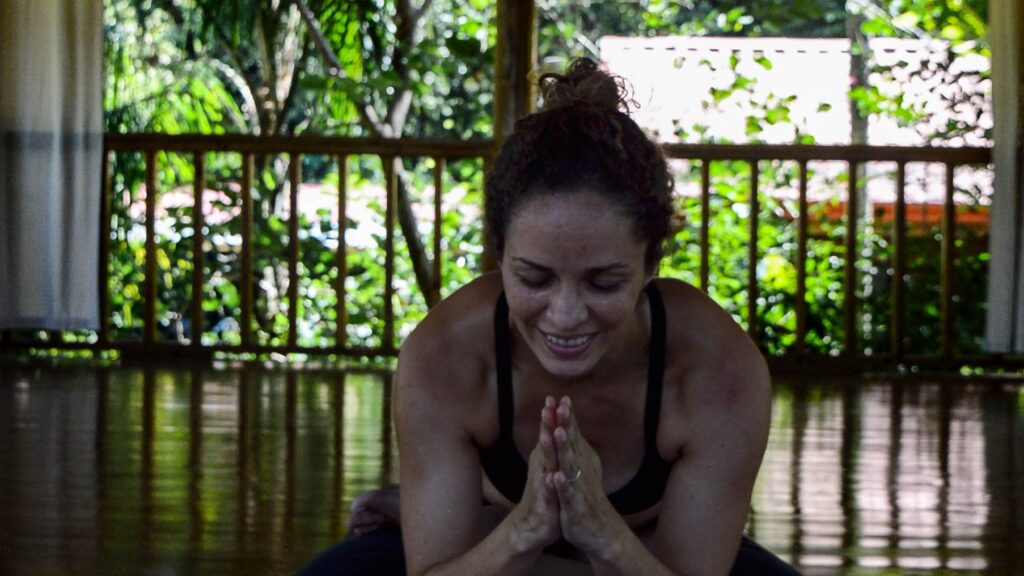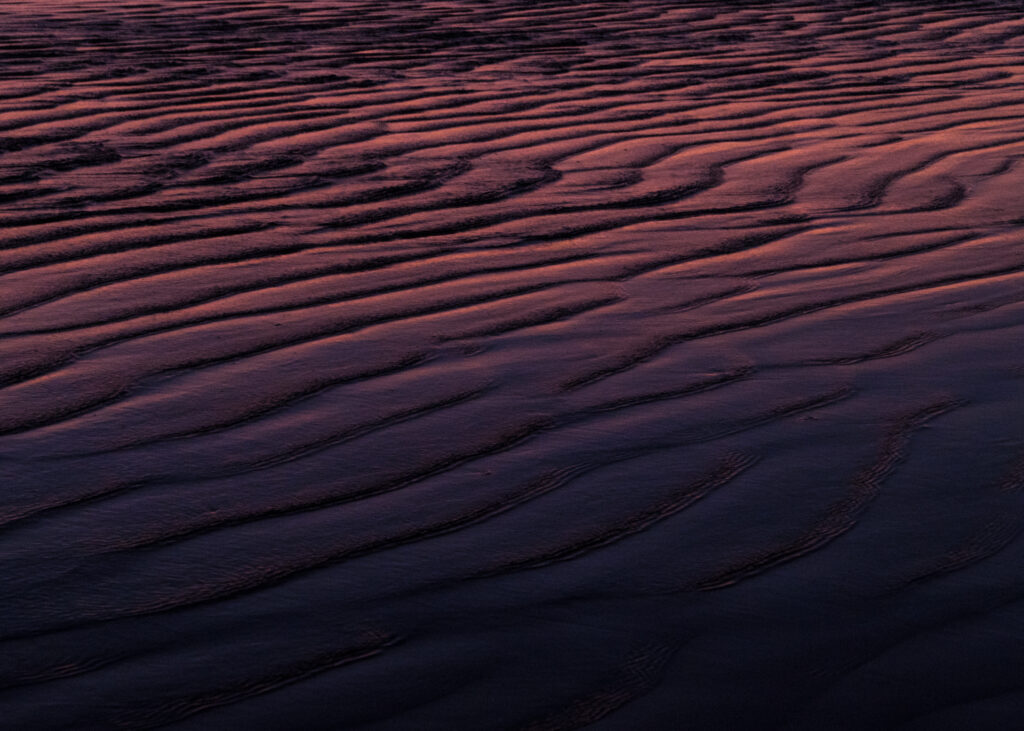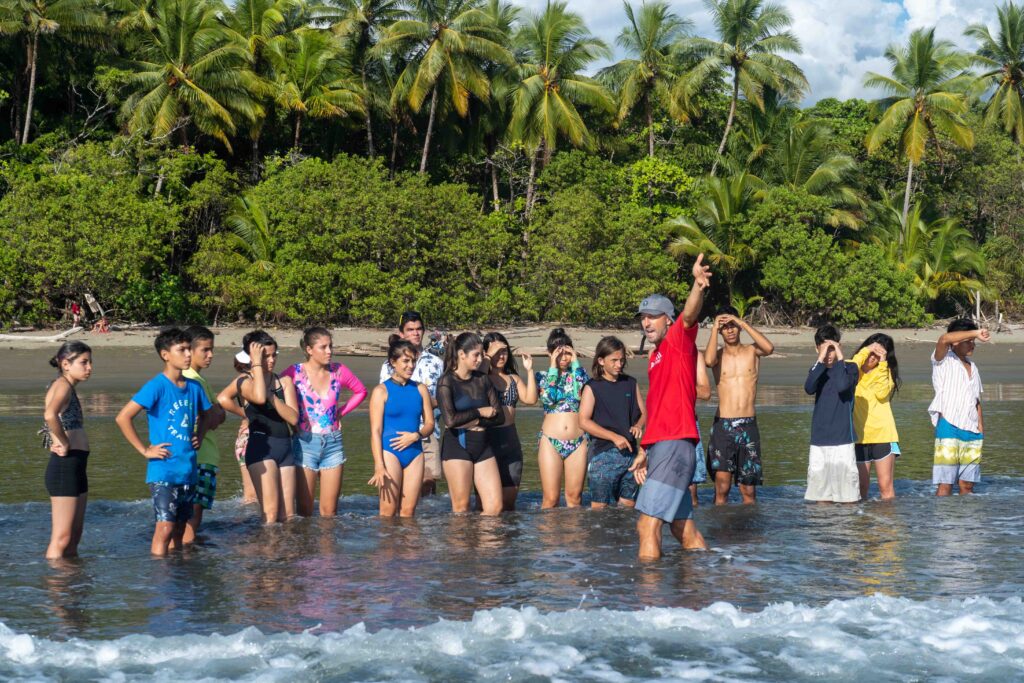Costa Rica Surf Guide: When and Where to Surf in Costa Rica
Costa Rica boasts rideable waves all year round, which is why it is one of the most popular surf destinations in the world. It is known for its quality and quantity of ocean waves due to its ability to “pick up” swells from the North and South on its coastlines (Pacific and Atlantic).
No matter the surfing conditions, I’ve witnessed my surf students improving their skills in various waves, tides, and climates in Costa Rica.
With that said, if you want to make a strategic decision regarding your next surfing holiday, I’ve created this helpful Costa Rica Surf Guide, which will go into more detail on the following:
- Costa Rica’s Seasons: They differ from North America and Europe’s seasons.
- Your Surf Skill Level: Depending on your skill level, you may prefer a different season than, say, a pro surfer. Many Costa Rican “surf guides” are in fact geared towards experienced surfers.
- Where to Surf in Costa Rica: The country can be divided into five distinct surf zones that operate differently depending on the time of year.
- When to Surf in Costa Rica: We will look at the different conditions that can contribute to making it an overall “good” time to surf in Costa Rica.

7 Day Surf Camp
Week long, set-date, surf vacations that invite you to learn the art of surfing while learning about Mother Ocean, engaging with the community, and awakening the inner surfer.
Learn MoreUnderstanding Costa Rica’s Seasons
Costa Rica basks in a tropical climate year-round, with two distinct seasons that paint the landscape in different hues. Generally, the “summer” or dry season stretches from December to April, while the “winter” or rainy season reigns from May to November.
An easier way to visualize these contrasting seasons is to imagine them as the reverse of the Northern Hemisphere’s winter and summer. When North America celebrates Christmas, Costa Rica is basking in the warmth of summer.
However, due to the country’s diverse ecological zones and microclimates, a kaleidoscope of local climatic conditions awaits exploration. This diversity ensures that every region offers a unique tapestry of weather patterns, ensuring a remarkable experience for travelers seeking adventure or respite

Costa Rican Rainy Season (May-November) vs. Dry Season (December-March)
Rain in Costa Rica doesn’t always mean cold, but it does mean wet! That being said, most travelers find it easy to manage this time of year with raincoats and umbrellas.
Flooding is rare but can occur in the rainiest months of the year, namely September and October. On occasion, in these months, the region can experience tropical storms that leave a trail of rainy weather for a week or more at a time.
For the most part, during the rainy season, the showers blow in and out, leaving clear skies in a matter of hours or even minutes. Generally, it rains for specific periods of the day, typically in the afternoons (leaving gorgeous sunny mornings to enjoy, which won’t show up on any weather app).
Depending on the region, dry season can mean dry or slightly less rainy. The North Pacific, for example, consists of a tropical dry forest, meaning many trees and plants in this region lose their leaves to conserve energy and water. Roads can be dusty. Sun protection (hats, sunglasses, sunscreen) is a requirement for most activities.
The South Pacific, however, remains green and luscious all year long. The rivers slow their flow into the ocean, allowing debris and particulates to settle, making it a great time of year to enjoy the crystal clear waters while doing any ocean-based activity: snorkeling, scuba diving, and, of course, surfing!

Visiting Costa Rica in the Rainy Season (May – November)
Pros
- Smaller crowds
- Less expensive
- Green and lush
- Bigger and more consistent waves
Cons
- Lightning can disrupt some activities
- Roads can occasionally be affected by landslides
- The ocean can be stormy or contain river debris — not ideal for surfing.
- Waves can be too big for beginner or even intermediate surfers

Visiting Costa Rica in the Dry Season (December – March)
Pros
- Mostly sunny weather
- Waves can be smaller, which is great for beginner to intermediate surfers
- The ocean can appear “glassy” — calm and tranquil
Cons
- Extreme heat + sun (sunburns and heat-related ailments are common)
- More expensive
- Bigger crowds (escaping wintertime in the Northern Hemisphere)
- Dry and dusty landscape, depending on the region

Your Surf Skill Level
Best Time to Surf in Costa Rica for Beginners
For those just dipping their toes into the world of surfing, the calm and gentle waves of Costa Rica’s summer season often provide the ideal playground. Beginner to intermediate surfers typically thrive in smaller swells, allowing them to hone their skills without the challenges of towering breakers.
However, true beginners often find their footing in the white water, the portion of the wave that has already crashed. Here, they can practice essential techniques like board control, pop-ups, and turning while still able to touch the ocean floor, conserving precious energy for mastering the fundamentals.
White water surfing is essential for new surfers because it saves arm strength for practicing the pop-up rather than tiring yourself out by paddling without riding any waves. Interestingly, some of the best white water conditions arise during Costa Rica’s winter, when the “outside” waves swell to greater heights.
Ultimately, the best time for beginners to start surfing is today! This means that any time is a good time to go out and practice your skills using the daily conditions, no matter what they are. There is always something to learn, especially if you have good instruction.
Those who truly master surfing are the brave individuals who show up at the beach and learn from even the most challenging conditions. They also have the motto that “later” is always too late.
💡 Learn More: Want to see what it’s like to take lessons with us at Bodhi Surf + Yoga, here in Costa Rica? Get started with our Learn to Surf video series here:
Best Time to Surf in Costa Rica for Advanced Surfers
For advanced surfers looking for big waves (4-6 ft.+), the best time to surf depends on your travel location.
Costa Rica is typically divided into four surf regions: North, Central, South Pacific, and the Atlantic, as detailed in the following section.

Costa Rica Surf Spots Map
Pacific Ocean
Ocean waves arrive at the Pacific coastline in Costa Rica from two primary directions: North and South. The Pacific coast generally sees waist-to-head high waves all year round, but big Southwest (SW) swells can range from 6-12 ft. from April to October.
The most consistent surf comes from the Southwest Pacific Ocean between late May and August, coinciding with the rainy season. During this time, the winds are usually favorably offshore (wind blowing from land towards the ocean) in the mornings.
South swells come less frequently from September to November but are still sizable. These few months, however, are also the rainiest part of the year, and the surf can be choppy with onshore winds (blowing from the ocean to land). There are few crowds during this time of year, and many locals enjoy the cloudy shade.
From December to February, the South swells are gone, and only the more prominent Northwest (NW) swells break, so the crowds tend to accumulate at the better spots. These months are typically more minor (ideal for beginners) and are the priciest time of the year to travel simply due to demand.
Then, from March to early May, the first infrequent major swells arrive from the South to kick off the rainy season again.

Guanacaste
May through August is the biggest surf season and also when crowds are the heaviest. This region is also more consistent than any other region in Costa Rica during the dry season from December to April.
Pros of surfing in Guanacaste:
- Picks up NW swells from the North Pacific during the dry season (December and January)
- NE offshore winds prevail, especially in the dry season
- Plenty of beach breaks to pick up SW swell
- Dozens of surf schools
Cons of surfing in Guanacaste:
- Can get crowded

Golfo DE Nicoya
The giant waves occur from May to August, medium-sized from September to November, and again from February to April, and the smallest surf occurs in December and January. The conditions during these dry months are often pristine: clear skies, offshore winds, and transparent, blue water.
Pros of surfing in the Golfo de Nicoya:
- It contains many famous surf towns and breaks
- Varied surf breaks for all levels
- Plenty of beach breaks to pick up SW swell
Cons of surfing in the Golfo de Nicoya:
- Can get crowded

Central Pacific – Puntarenas
Bodhi Surf + Yoga is in this region, sometimes called the South Pacific. Again, similar to Nicoya, swell size varies from dry to rainy season. The rainy season here is a little longer, from March to September, with September and October experiencing the most rainfall and January and February experiencing the least.
December through March often experiences 2-3 ft. swells, while July through October sees swells more typically in the 4-5 ft. range. Generally, the biggest swells arrive from May to November and are considered the prime “surf season” months.
However, many surfers patiently await the smaller waves in the dry season, creating beautiful conditions to relax and have fun in the ocean. These small-waved days can make some of the best opportunities for learning how to ride “green” waves.
Winds are typically mild throughout the year, increasing in the afternoons during the rainy season. Morning winds are usually offshore, and afternoons are onshore until nearing sunset.
Water temperature remains around 28°C or 82°F, meaning boardshorts and bikinis with rash guards are acceptable surfing attire all year round. Like the coastal waters, the air temperature doesn’t fluctuate much, ranging from a minimum temp of 22°C at night to 35°C during the day (71.6°F to 95°F).
Pros of surfing the Central Pacific – Puntarenas:
- Miles of undeveloped beaches
- Marino Ballena National Park protects coastal zones from development.
- Plenty of beach breaks to pick up SW swell
- Surf towns in this region tend to have a more community and family feel than the infamous “party” surf towns.
Cons of surfing the Central Pacific – Puntarenas:
- NW swells (dry season swells) don’t reach this stretch of coast as well as in Guanacaste.
- It has a more extended rainy season than Guanacaste.

South Pacific – Golfo Dulce
Surfing in this area is inconsistent due to the topography or shape of the land mass in this part of the country. Only large S-SW swells will reach these beaches and be surfable. This region’s humid, hot, rainforest-activated climate sees more rainfall and thunderstorms than any other part of the Pacific coast.
In recent years, popular swell forecasting services such as Magic Seaweed and Surfline have made it challenging to find uncrowded waves when they become surfable.
Learning proper surfing etiquette is a must for this region, which contains several well-known point breaks.
Pros of surfing the South Pacific – Golfo Dulce:
- The region boasts impressive point breaks, which offer long rides.
- Surfing point breaks are an essential part of an advanced surfer’s repertoire.
Cons of surfing the South Pacific – Golfo Dulce:
- Requires a significant S-SW swell direction to “turn on.”
- One of the most remote and rainiest surfing regions in Costa Rica
- Growing crowds make learning challenging and, at times, dangerous.
Atlantic Ocean
Costa Rica’s East-facing Caribbean Sea (part of the Atlantic Ocean) receives sizable and powerful waves from December to April when Northeast and East swells arrive. Rogue hurricanes can also produce swells from June to August.
While the Caribbean coast is usually wetter than the Pacific side, September and October can be sunny and pleasant (opposite of the Pacific) but typically flat (no waves or tiny waves) at this time.
Although learning to surf on the Caribbean side is possible, many famous waves here are reserved for experienced to expert-level surfers.

Caribbean
This region picks up the best conditions from December to April. Specifically, in December and February, and again in June and July, the Atlantic is most active, producing both high-pressure and low-pressure storms, pushing waves to this region.
Pros of surfing the Caribbean of Costa Rica:
- Expert level waves
- Weather is opposite the Pacific, offering respite from the rains
- The opportunity to experience the Caribbean culture
Cons of surfing the Caribbean of Costa Rica:
- Most breaks are best suited for experienced locals

Best Surf Spots in Costa Rica
Costa Rica’s diverse coastlines offer an array of breathtaking surf spots, each with its unique charm and challenges. From the thundering waves of the Pacific to the powerful rollers of the Atlantic, here are some of the best surf destinations that should be on every wave rider’s bucket list:
- Playa Guiones (Nosara): Nestled in the Nicoya Peninsula, this stunning beach boasts world-class waves that cater to surfers of all levels. Playa Guiones is a surfer’s paradise with its consistent swells and laid-back vibe.
- Pavones (Golfo Dulce): Renowned for its incredible left-hand point break, Pavones is a mecca for advanced surfers seeking long, barreling waves. This remote location offers an unforgettable surfing experience amidst lush rainforests and pristine beaches.
- Tamarindo (Guanacaste): A vibrant surf town that comes alive with its buzzing nightlife and lively atmosphere, Tamarindo is a favorite among surfers and beach enthusiasts alike. Its consistent waves and stunning sunsets make it a must-visit destination.
- Puerto Viejo (Caribbean Coast): On the Caribbean side, Puerto Viejo de Talamanca offers a unique blend of surf culture and laid-back Caribbean vibes. Powerful waves and a vibrant local community, perfect for experienced surfers seeking an off-the-beaten-path adventure.
Other cool surf spots worth checking out include Hermosa Beach (Central Pacific Coast), Cabo Matapalo and Playa Pavones (Osa Peninsula), and Dominical Beach (south Pacific Coast).
Other Considerations for Surfing in Costa Rica
What Makes Waves “Good”: Swell, Wind, and Tides
Reading a surf report is one of the most significant factors in finding good surf conditions.
The wave size, period, and swell direction can all change as you travel along the contours of the coastline. Whether the winds are onshore, offshore, howling, or still, they also dramatically affect the waves’ shape and the ocean’s texture.
Finally, Costa Rica experiences a big tide swing, up to 11.5 ft. (3.5 m). This dramatically changes the waves’ condition. For example, waves can be non-existent at certain spots during low tide.
The same swell can produce well-overhead surf at the same beach at high tide. Understanding how the tide affects waves is integral to learning how to surf.

Weather in Costa Rica
Depending on the activities you and your family might hope to do, weather can be a deciding factor. For example, the dry season (with lots of sun protection) might be a good choice if you are keen on hiking. Then again, the rainy season is often less crowded, more lush, and awe-inspiring waterfalls flow at their maximum capacity.
Likewise, if you plan to travel to a remote country region, heavy rains can occasionally wash out roads and cause landslides. On the other hand, the afternoon downpours and thunderstorms are downright impressive and can often cause a sense of beauty and wonder that a temperate sunny day might not evoke.
Yoga, for example, is a marvelous activity for a cool rainy afternoon.
There are so many microclimates in Costa Rica that predicting daily weather patterns is a challenge that not even the local weather apps have overcome.
It’s important to consider other activities your family might pursue in Costa Rica, such as hiking, river rafting, whale watching, beach hopping, etc. Check out some must-do and free activities in our area to get an idea of what you and your family might enjoy in addition to surfing.
Tourism in Costa Rica Considerations: Prices and Crowds
The prices and crowds are at their highest whenever North Americans have holidays and summer breaks. This means Christmas and New Year, Easter, June to August, and at times during Thanksgiving week.
Semana Santa, or Easter week, is one of the busiest times of the year, with national tourists and beaches often at maximum capacity.
Costa Rican students have their “summer” vacation from December to February, making this another popular time for national tourists to spend at the beach with their families.

Advice From Bodhi Surf + Yoga’s Surf Instructors
Here at Bodhi Surf + Yoga, we encourage our surf students to become independent surfers by learning to read the ocean and generate a surf report independently — without relying on a surf forecasting site like Magic Seaweed.
Understanding how to read a surf report will help you pick an optimal time to surf with sound waves and weather conditions. Fun waves and good conditions can be found at any time of the year, and often, the best days are the ones no one could have anticipated!
Learn to hone your skills in choosing the right conditions for surfing with a reliable surf camp, such as Bodhi Surf + Yoga. And remember, there’s no time like the present to enjoy Central America’s pristine rainforest and tropical beaches. Don’t let “later” become too late.
FAQs
Can beginners surf in Costa Rica?
Absolutely! Costa Rica’s Pacific Coast boasts hundreds of surf breaks that are largely uncrowded, making them perfect for both beginners and professionals alike.
Is it hard to surf in Costa Rica?
Costa Rica caters to surfers of all skill levels. If you’re new to surfing, there are several mellow beach breaks and surf schools for you. And if you’re an intermediate/pro, you’ll find many challenging point breaks and reef breaks.
Is it safe to surf in Costa Rica?
Yes! Costa Rica is a top destination for both beginner and experienced surfers.

For First-Time Surfers
You Don't Need Experience. You Don't Need Gear. You Just Need This.
Our free 5-day email course that reveals the 5 myths keeping beginners at "I'm not ready" instead of catching their first wave and finding inner peace-and how to overcome them fast.
Change the heading on the Separator tab ->
Search
The Newbie Surf + Yoga Camp Kickstarter
Bust the 5 biggest myths about going to a surf and yoga camp so you can stop procrastinating and start catching waves - with our FREE 5-day email course.
Change the heading on the Separator tab ->
Most Read Blogs
What is the Meaning of Anjali Mudra?
May 27, 2020
Fitness for Surfers: Workouts, Exercises & Training
February 10, 2022
The Best Places to Eat in Uvita, Costa Rica
May 19, 2022
How to Get From SJO to Costa Ballena, Costa Rica
May 31, 2018
Change the heading on the Separator tab ->
Categories
Categories
- Bodysurfing (5)
- Food (7)
- Responsible Business (6)
- Surfing (65)
- Travel (65)
- Yoga (42)
Change the heading on the Separator tab ->
Newsletter
Thanks for subscribing! Please check your email for further instructions.
Change the heading on the Separator tab ->
Follow Us
Carly Stoenner
Change the heading on the Separator tab ->
Read more
Intro to Ayurveda: Pilar’s Exploration into the Ancient Science of Longevity
Words by Pilar
If you’ve visited us recently and spent time with Pilar specifically — whether on the yoga mat or over breakfast, you’ve likely heard her mention the word “Ayurveda” multiple times. That’s no…
Sandbars for Surfers: Everything You Need to Know and More
Words by Guest Post
Ever wonder what a sandbar is? When it’s low tide you can see them, but what happens when the ocean covers them? Most surfers may just look at the waves on the…
How to Give Back on Your Vacation
Words by George Frost
We’re just here to remind you that we DON’T have to feel bad about traveling. If done correctly and intentionally, traveling can be – and is, positive for the people of the…



